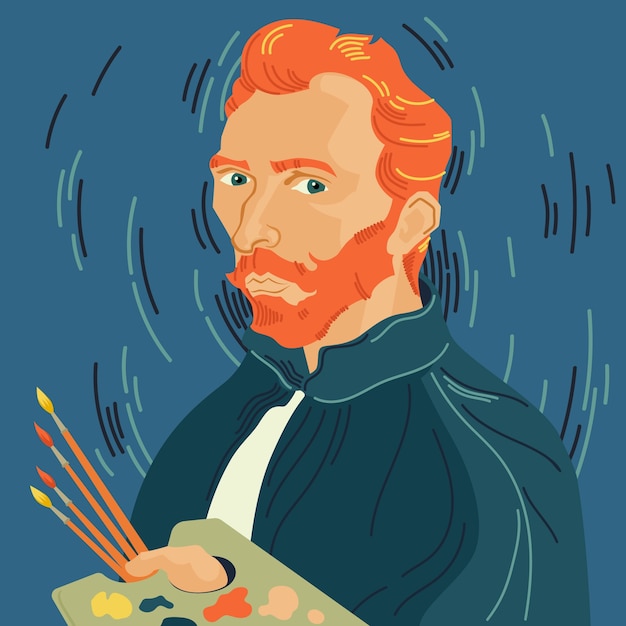10 Intriguing Facts About Pablo Picasso

Pablo Picasso was a Spanish painter and sculptor who revolutionized modern art.
Picasso’s full name was Pablo Diego José Francisco de Paula Juan Nepomuceno María de los Remedios Cipriano de la Santísima Trinidad Martyr Patricio Clito Ruíz y Picasso.
Picasso was born on October 25, 1881, in Málaga, Spain.
He showed artistic talent from a young age, and his mother, an amateur painter, recognized and nurtured his talent.
Picasso’s first word was reportedly pencil.
He painted his first masterpiece, First Communion, at the age of
7. Picasso co-founded the Cubist movement with Georges Braque, which revolutionized the way artists depicted objects and space.
Picasso is regarded as one of the most influential artists of the 20th century.
Picasso’s Blue Period, characterized by melancholy and monochromatic blue tones, lasted from 1901 to 1904.
The Rose Period followed Picasso’s Blue Period, featuring warmer colors and more cheerful themes.
Picasso created around 50,000 artworks during his lifetime, including paintings, sculptures, ceramics, drawings, and textiles.
He was known for his restless creativity and constantly explored different art styles and techniques.
Picasso’s most famous work is probably Guernica, a large-scale mural representing the atrocities of the Spanish Civil War.
Picasso was a prolific artist, often creating multiple artworks in a single day.
10 Intriguing Facts About Pablo Picasso part 2
He had a fascination with African art, which heavily influenced his work during the early 1900s.
Picasso was also a skilled ceramicist and created numerous decorative pottery pieces.
He had a tumultuous personal life, with multiple marriages and relationships with several women, which influenced his artwork.
Picasso’s art often depicted powerful and bold women, who were also a source of inspiration and subject matter for him.
He was known for his bohemian lifestyle and was a prominent figure in the artistic and intellectual circles of his time.
Picasso collaborated with many notable artists, writers, and musicians, including Jean Cocteau and Igor Stravinsky.
He had a deep love for animals, particularly cats, and often had them as pets in his studio.
Picasso’s art was not limited to traditional mediums; he also experimented with collages, assemblages, and found objects.
He was known for his quick and spontaneous brushwork, often finishing artworks in just a few hours or even minutes.
Picasso was a master of self-promotion and actively contributed to the construction of his own artistic reputation.
He designed costumes and sets for theater and ballet productions, showcasing his multidisciplinary approach to art.
Picasso was a voracious reader and drew inspiration from literature, poetry, and philosophy.
He had a deep appreciation for classical art, especially the works of Velázquez, Goya, and El Greco.
Picasso spent much of his adult life in France, particularly in Paris and the French Riviera.
He became friends with many influential figures of his time, including Gertrude Stein, Ernest Hemingway, and Jean-Paul Sartre.
Picasso’s work was met with both admiration and controversy, and he was a central figure in countless art discussions and debates.
He was known for his distinctive style, characterized by geometric shapes, bold colors, and distorted perspectives.
Picasso had a fascination with bullfighting, which often appeared as a recurring motif in his artworks.
He continued to create art until his death at the age of 91, leaving behind an unparalleled artistic legacy.
Picasso’s art is celebrated worldwide, and his works can be found in numerous museums and private collections.
He once said, Every child is an artist. The problem is how to remain an artist once we grow up.
Picasso’s art reflects a constant exploration and reinvention of self-expression, inspiring generations of artists to do the same.
He believed that art should be a form of communication and a tool to evoke emotions and provoke thought.
Picasso’s diverse body of work reflects his versatility and willingness to experiment with different styles and subjects.
He was known for his ability to capture the essence and emotion of a subject with just a few simple brushstrokes.
Picasso’s work often reflects the political and social issues of his time, including war, inequality, and human suffering.
He embraced and celebrated his heritage, often incorporating elements of Spanish culture and folklore into his art.
Picasso’s art continues to be studied, analyzed, and interpreted, contributing to ongoing discussions about the nature and purpose of art.
He once said, Art is the lie that enables us to realize the truth.
Picasso’s legacy extends beyond his artwork; he left a profound impact on the art world, inspiring future generations of artists to push boundaries and question conventions.
His name has become synonymous with innovation, creativity, and the power of artistic expression.